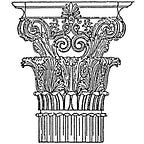The Case of the Randomized Panel Problem
Computer Science:
In an effort to make this comparison as visual as possible, I offer only two paragraphs for context. I was introduced to this challenge on the DynamoBIM forums and thought it presented a great opportunity to analyze and compare different types of computer science approaches to architecture. As the amount of data a project is expected to integrate increases, and the more often projects are faced with the dilemma of trying to do a significant design activity computationally given a project’s limited resources, computer science and software development skills will continue to grow in importance as a way of addressing such a predicament. With neither the time nor inclination to do more years schooling — yet still desperate to have the information — other types of analysis and comparisons are available to learn from. In an effort to duplicate the facade of Sheffield U.K.’s “Cheese Grater” parkade, I tried to develop the geometry through both Dynamo and Mathematica 11 workflows, the results of which follow. This gives insight into the nuances of each tool, and therefore contributes to one’s ability always pick the best tool for the job.
Dynamo
The image above is zoomable but please excuse the lack of annotations. It’s meant more for study than wide distribution or long-term reuse.
A grid showing my early progress. I’m testing the function to see if anything is broken at the extremes.
Dynamo seemed maxed out at about 56x56x2 panels.
Mathematica 11
I needed lots of online help to get this completed.
A grid of some early success. Again trying to stress the function to see if any bugs crop up.
The computing power of Mathematica 11 in the cloud goes a bit further before constantly hanging up the browser at 80x80x2.
Conclusions:
The main insight I got from attempting to replicate the same geometry in Dynamo and Mathematica was that Mathematica 11 was superior at developing the abstract math of the panels, whereas direct control of the geometry was better in Dynamo. For example, I was able to create the divided panel points quicker in Mathematica, but then struggled to apply the geometric transformations. In Dynamo, it was more difficult to derive the panel points from the divided surface, but once the panels were created found manipulating them easier. Other’s in the Dynamo community have commented on this feature of Dynamo’s programming limits. I was able to generalize both algorithms so they simply take the desired number of panel divisions as the main parameter to drive the form. One can see the variations created throughout this piece. As a next step — if I wanted to continue to develop the code — it should be possible to take each model into REVIT and assign materials and documentation etc., but left them as is here because I wanted to move onto other projects. Clearly when approaching computational BIM, the wider variety of tools one has available, the higher the chance a better tool for the job can be found, and this all feeds in to raising the final building’s design quality.
